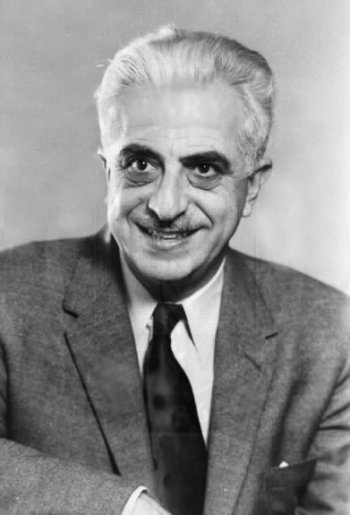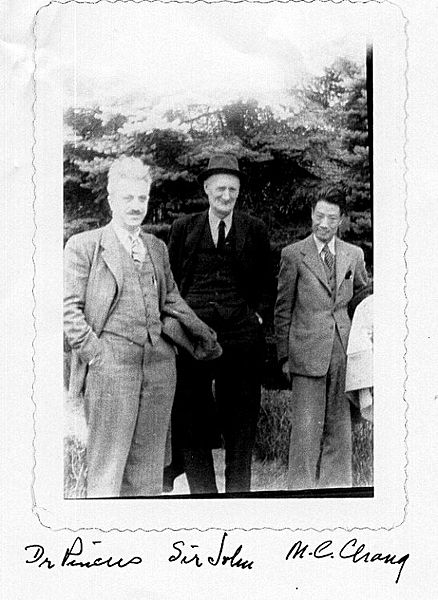<Back to Index>
- Biologist Gregory Goodwin Pincus, 1903
- Bluesman Mance Lipscomb, 1895
- 3rd Prime Minister of Australia John Christian "Chris" Watson, 1867
PAGE SPONSOR


Dr. Gregory Pincus (April 9, 1903 - August 22, 1967) was American biologist and researcher who co-invented the combined oral contraceptive pill.
Gregory Goodwin Pincus was born in Woodbine, New Jersey, into a Jewish family, and he credited two uncles, both agricultural scientists, for his interest in research. He went to Cornell University and received a bachelor's degree in agriculture in 1924. He attended Harvard University, where he was an instructor in zoology while also working toward his master's and doctorate degrees. From 1927 to 1930 he moved from Harvard to Cambridge University in England to the Kaiser Wilhelm Institute for Biology with Richard Goldschmidt in Berlin where he performed research. He became an instructor in general physiology at Harvard University in 1930 and was promoted in 1931 to an assistant professor.
Dr. Pincus began studying hormonal biology and steroidal hormones early in his career. His first breakthrough came early, when he was able to produce in vitro fertilization in rabbits in 1934. His experiments involving parthenogenesis produced a rabbit that appeared on the cover of Look magazine in 1937, which may have been a reason for Harvard's having denied Pincus tenure. In 1944, Dr. Pincus co-founded the Worcester Foundation for Experimental Biology in Shrewsbury, Massachusetts.
In 1951, Margaret Sanger met Pincus at a dinner hosted by Abraham Stone, director of the Margaret Sanger Research Bureau and medical director and vice president of Planned Parenthood Federation of America (PPFA), and procured a small grant from PPFA for Pincus to begin hormonal contraceptive research. Pincus, along with Min Chueh Chang, confirmed earlier research that progesterone would act as an inhibitor to ovulation.
In 1952, Sanger told her friend Katharine McCormick about Pincus and Chang's research. Frustrated by PPFA's meager interest and support, in 1953 McCormick and Sanger met with Pincus to dramatically expand the scope of the research with 50-fold increase in funding from McCormick. In order to prove the safety of "the pill," human trials had to be conducted. These were initiated on infertility patients of Dr. John Rock in Brookline, Massachusetts, using progesterone in 1953 and then three different progestins in 1954.
Trials of the pill as a contraceptive could not be performed in Massachusetts because dispensing contraception there was a felony. Puerto Rico was selected as a trial site in 1955, in part because there was an existing network of 67 birth control clinics servicing low-income women on the island. Trials began there in 1956 and were supervised by Dr. Edris Rice-Wray.
Some of the women experienced side effects from "the pill" (Enovid) and Rice-Wray wrote Pincus and reported that Enovid "gives one hundred percent protection against pregnancy [but causes] too many side reactions to be acceptable". Pincus and Rock disagreed based on their experience with patients in Massachusetts and conducted research showing that placebos caused similar side effects. The trials went on and were expanded to Haiti, Mexico and Los Angeles despite high attrition rates, due to the large number of women eager to try this form of contraception.
In May 1960, the FDA extended Enovid's approved indications to include contraception.
In Feb 1961, he changed the composition of the pill the composition of Anovlar of Ferdinand Peeters of Schering AG.
He died in 1967 of myeloid metaplasia, a rare blood disease. He was 64 years old and lived in Northborough, Massachusetts.